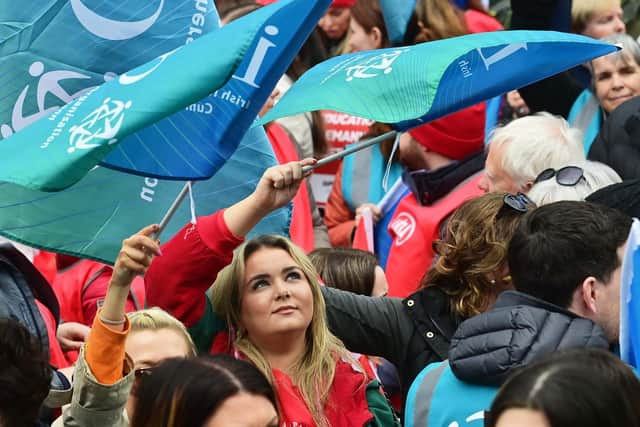Massive strike day planned for January 18: Here's a list of which unions are taking action and how many members each one has
and live on Freeview channel 276
It comes on the heels of news that Northern Ireland’s junior doctors are voting on whether or not to strike for the first time ever.
The results of that vote will not be out until mid-February, so it will be too late for them to join in the mass day of action planned by the unions for Thursday, January 18.
Advertisement
Hide AdAdvertisement
Hide AdThis has been planned since late 2023, and follows industrial unrest in Translink which led to five days without any public transport in the run-up to Christmas.


At the heart of the discontent is the issue of pay, with unions complaining that the rocketing inflation rate – which peaked in November 2022 at 11.1% – has slashed the value of their members’ paypackets (it has now fallen back beneath 5%).
According to the Irish Congress of Trade Unions, the umbrella body covering most (but not all) trade unions, here is the breakdown of the public sector workers who are set to strike on January 18:
• Unison – which has an NI membership of 42,075
• GMB – 9,839 (about half of whom are public sector)
• Society of Radiographers – 1,335
• National Association of Head Teachers – 761
• NIPSA – 41,206
• Royal College of Medicine – 1,322
• Unite – 34,279 (about half of whom are public sector)
• National Association of Schoolmasters Union of Women Teachers – 12,853
• Irish National Teachers’ Organisation – 7,085
• Charted Society of Physiotherapists – 1,769
• Ulster Teachers’ Union – 5,378
• British Dietetic Association – 433
• Royal College of Nurses – 15,000
Advertisement
Hide AdAdvertisement
Hide AdThe latter is not affiliated to the ICTU, and nor is the British Medical Association (BMA), which announced a strike ballot of junior doctors today.
The BMA says its members want an above-inflation pay increase for 2023/24, and a commitment thereafter to a 30% rise in pay, which it says will bring their salaries back to the level they were at 15 years ago before inflation ate away at their value.
It is understood a strike by junior doctors would cover the entire NHS, including A&E and paediatrics wards.
Being a junior doctor in Northern Ireland begins upon graduation from university.Initially, it means working as a "foundation house officer" for at least two years, starting at about £27,600.
Advertisement
Hide AdAdvertisement
Hide AdPay then rises fast, so by your second you could be earning in excess of £35,000.
Ultimately most junior doctors choose a specialism after a couple of years.
They can then work their way up the payscale as a "special registrar" (a type of junior doctor), where the payscale maxes out at £55,700.
The next levels up from junior doctor are consultant (between £88,800 and £119,700), an associate specialist and speciality (SAS) doctor (£45,300 to £92,500), or a GP (£70,000 to £105,600).
Advertisement
Hide AdAdvertisement
Hide AdIf the doctors vote in favour of action, a full 24-hour walk-out will take place starting at 8am on March 6, ending at 8am on March 7.
The Patient and Client Council, which describes itself as “a powerful, independent voice for patients, clients, carers and communities” was contacted, but said it did not comment on possible strike action.